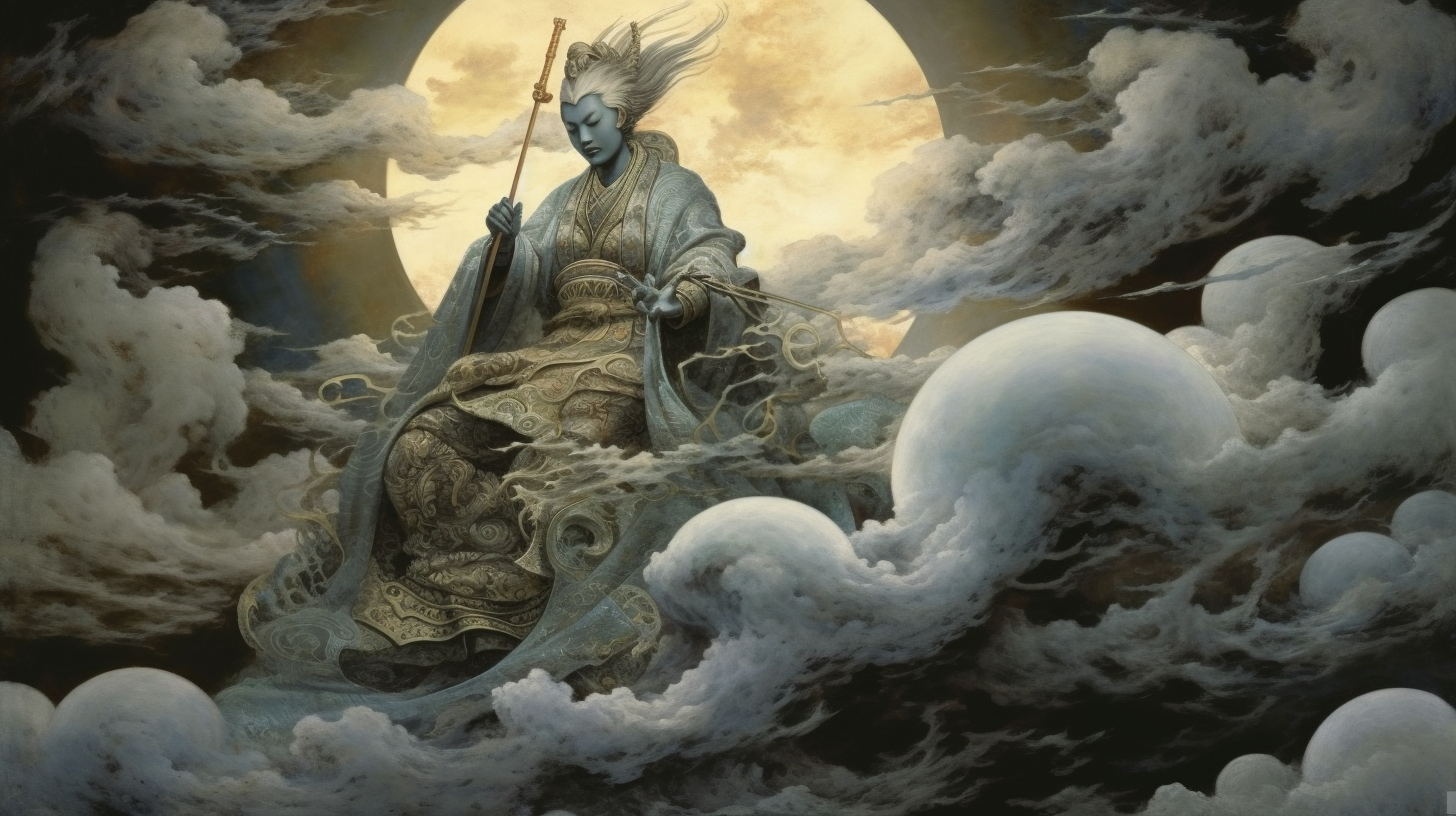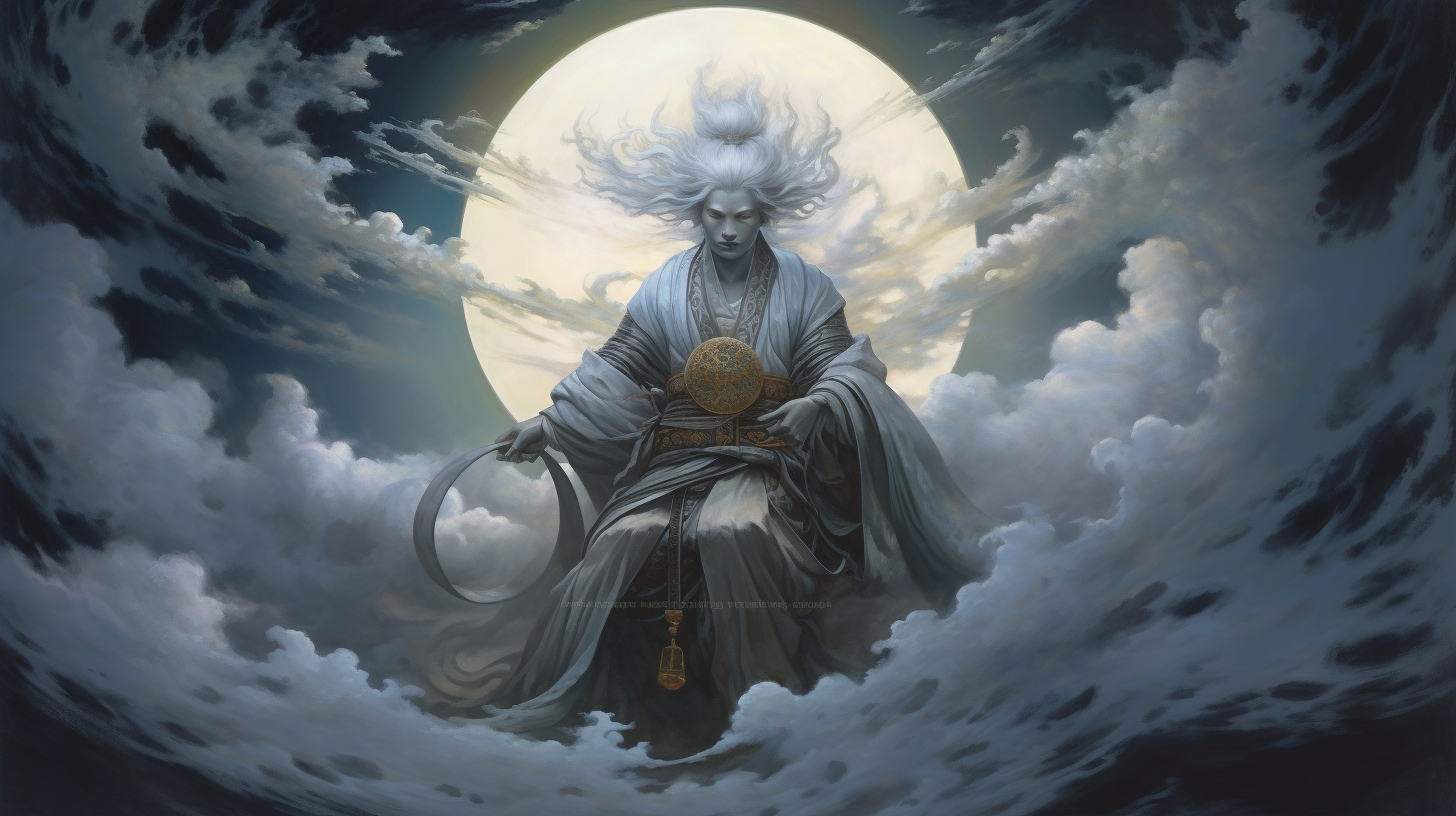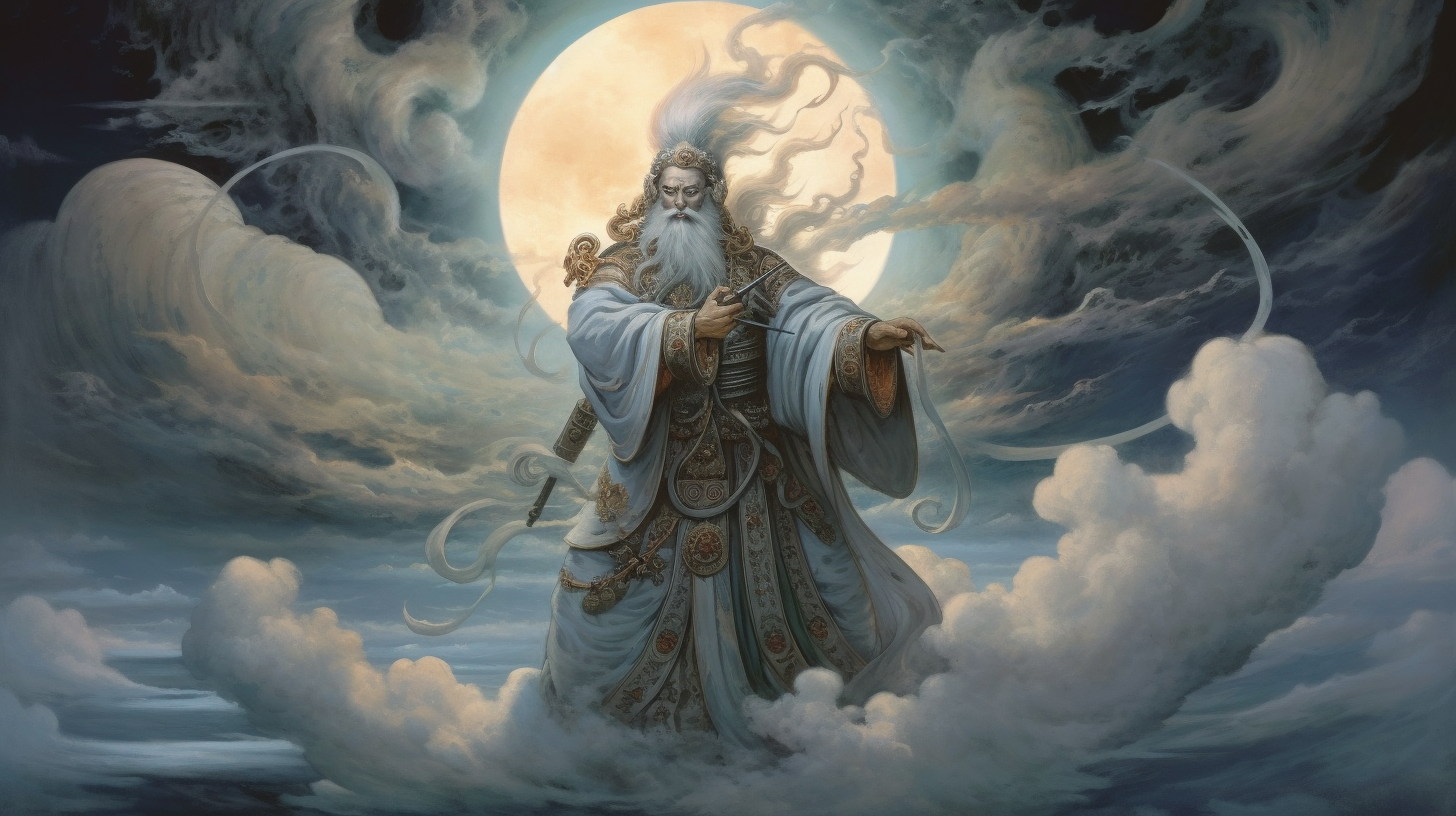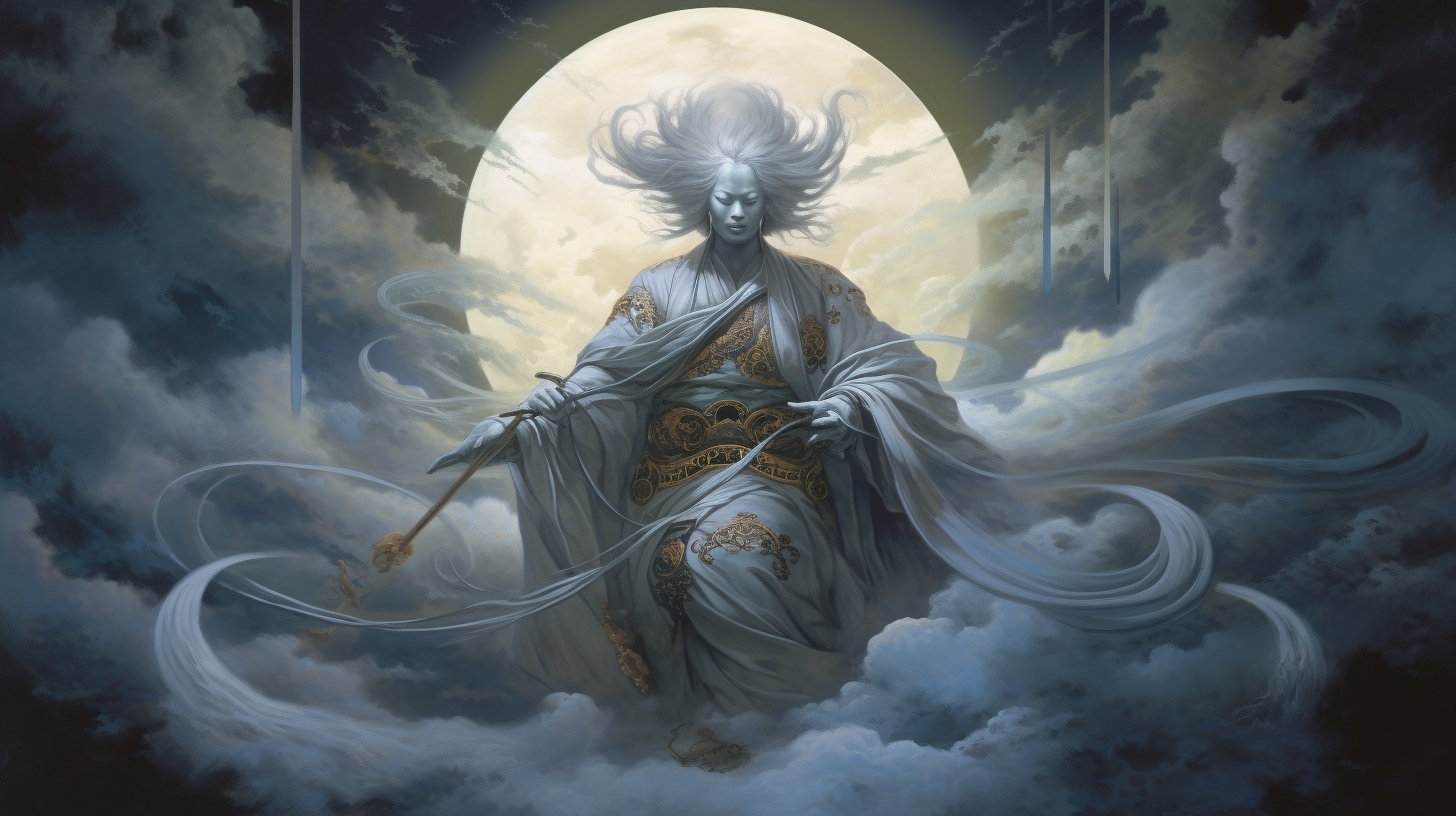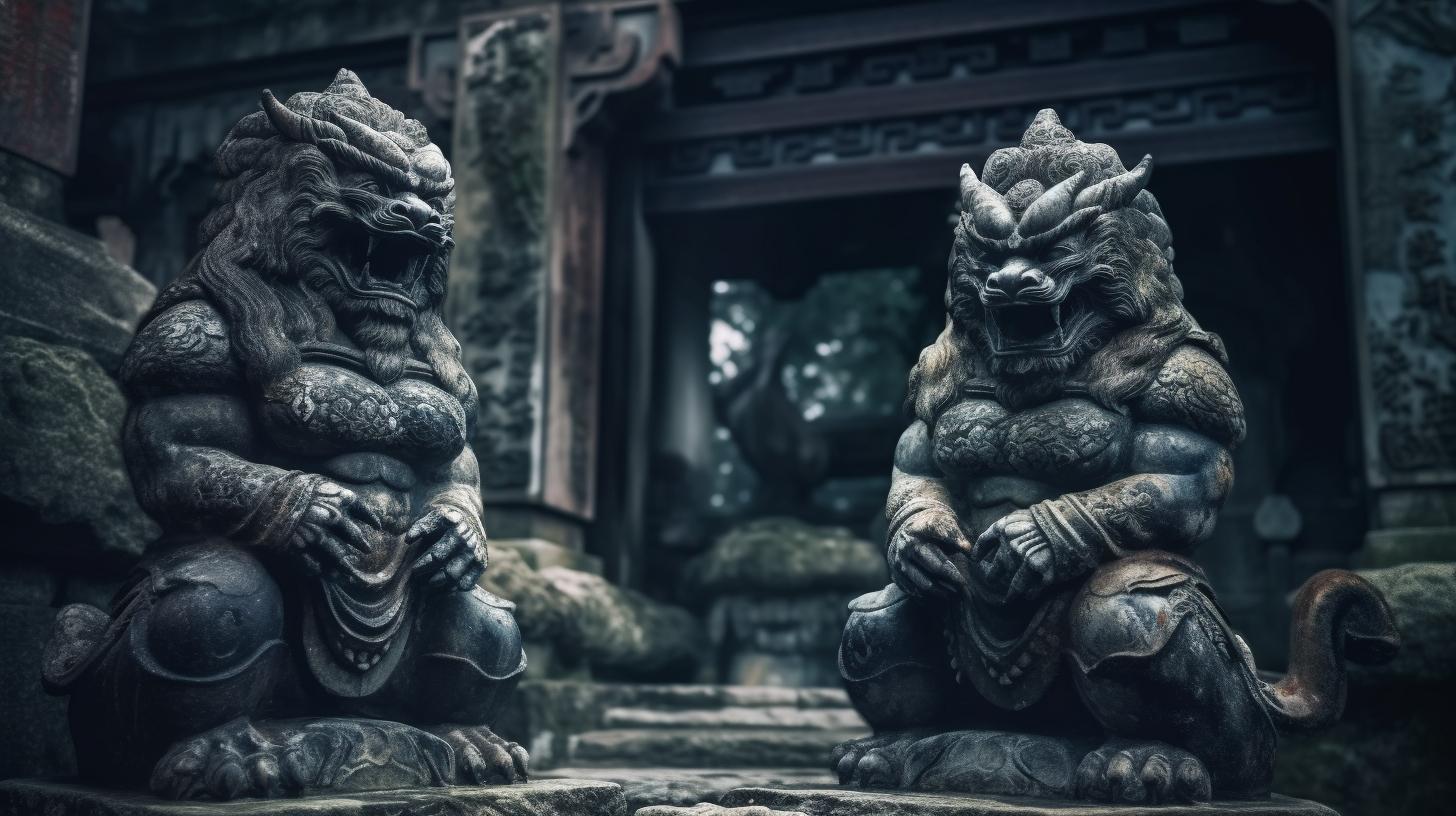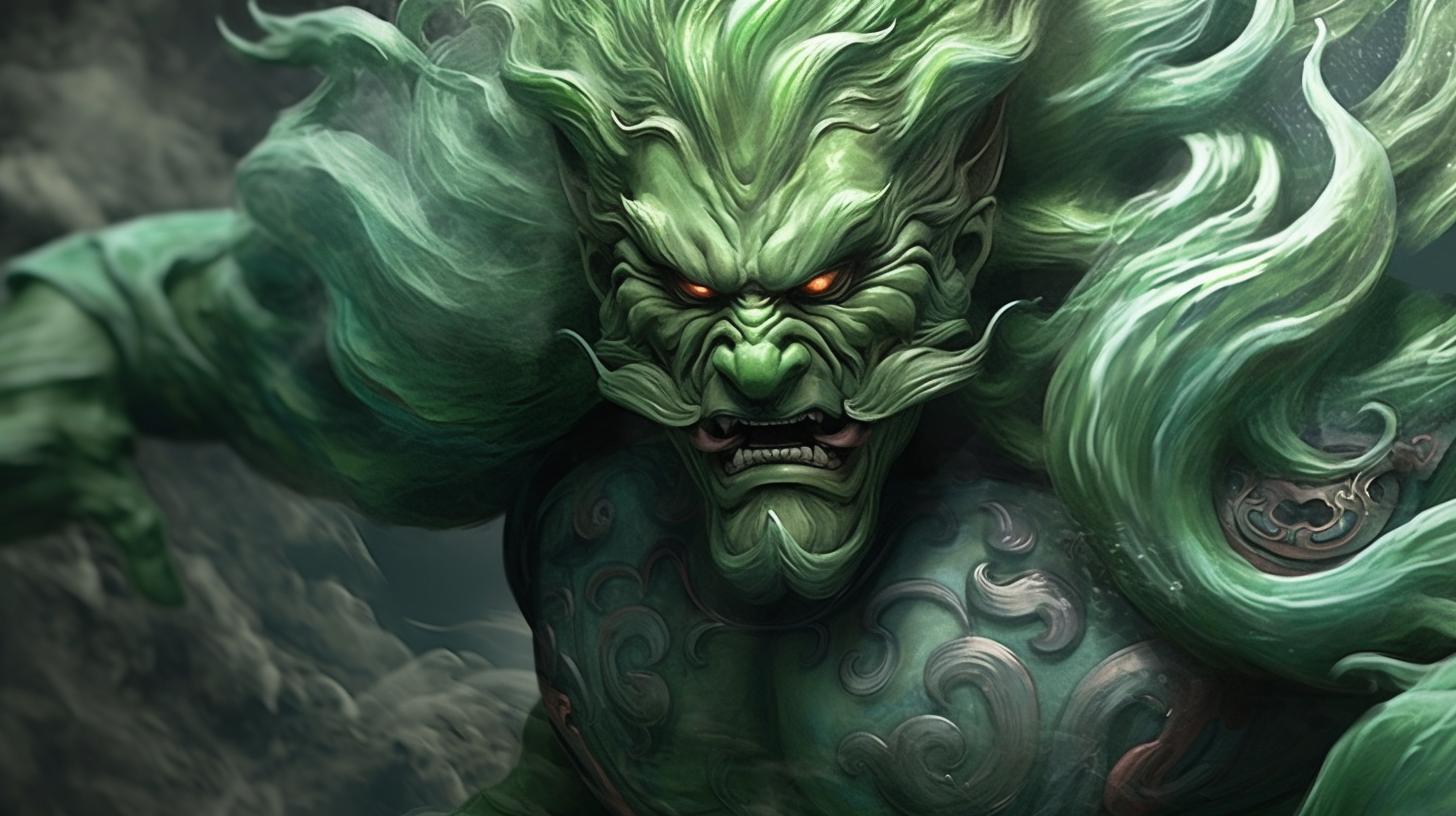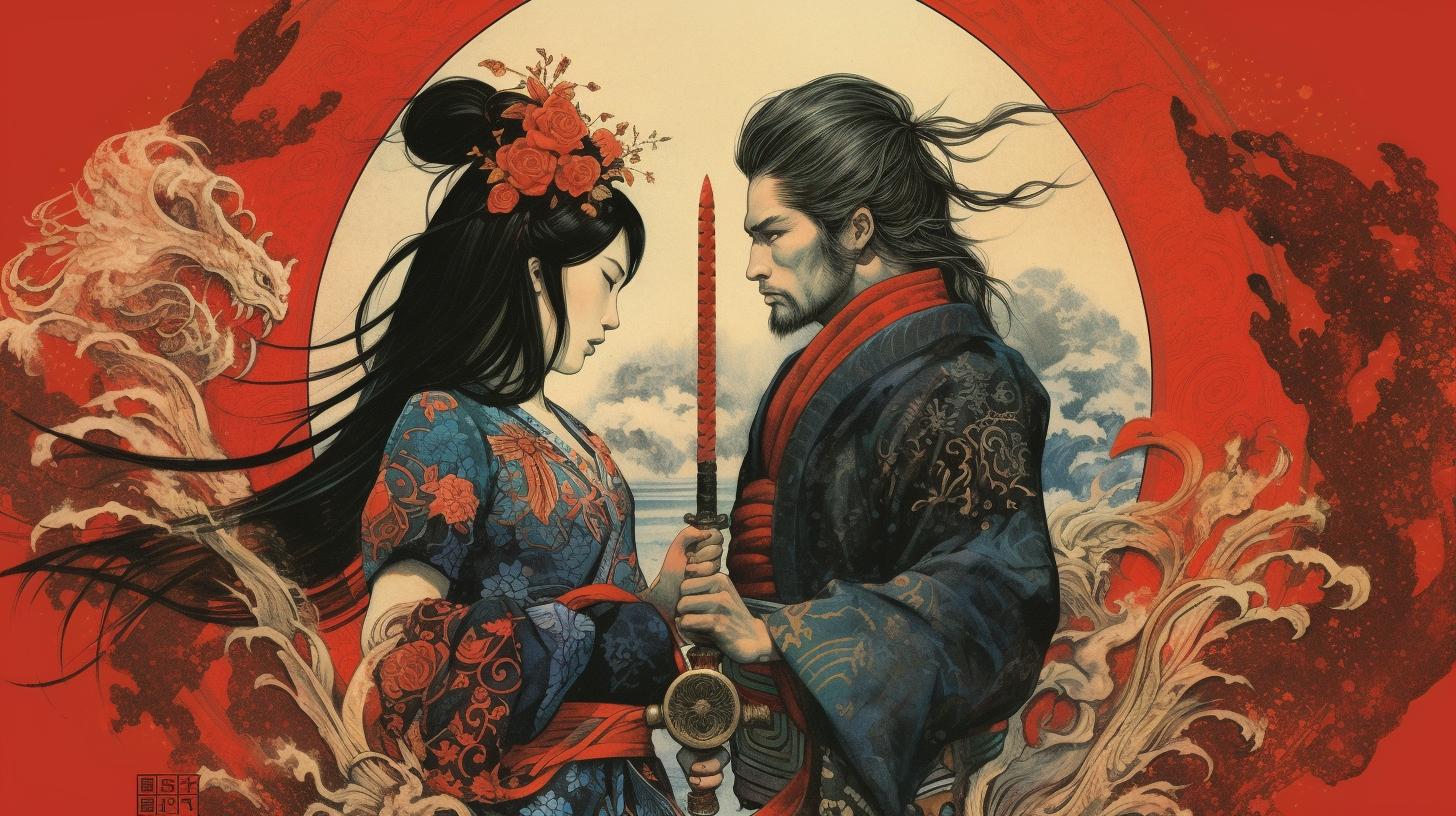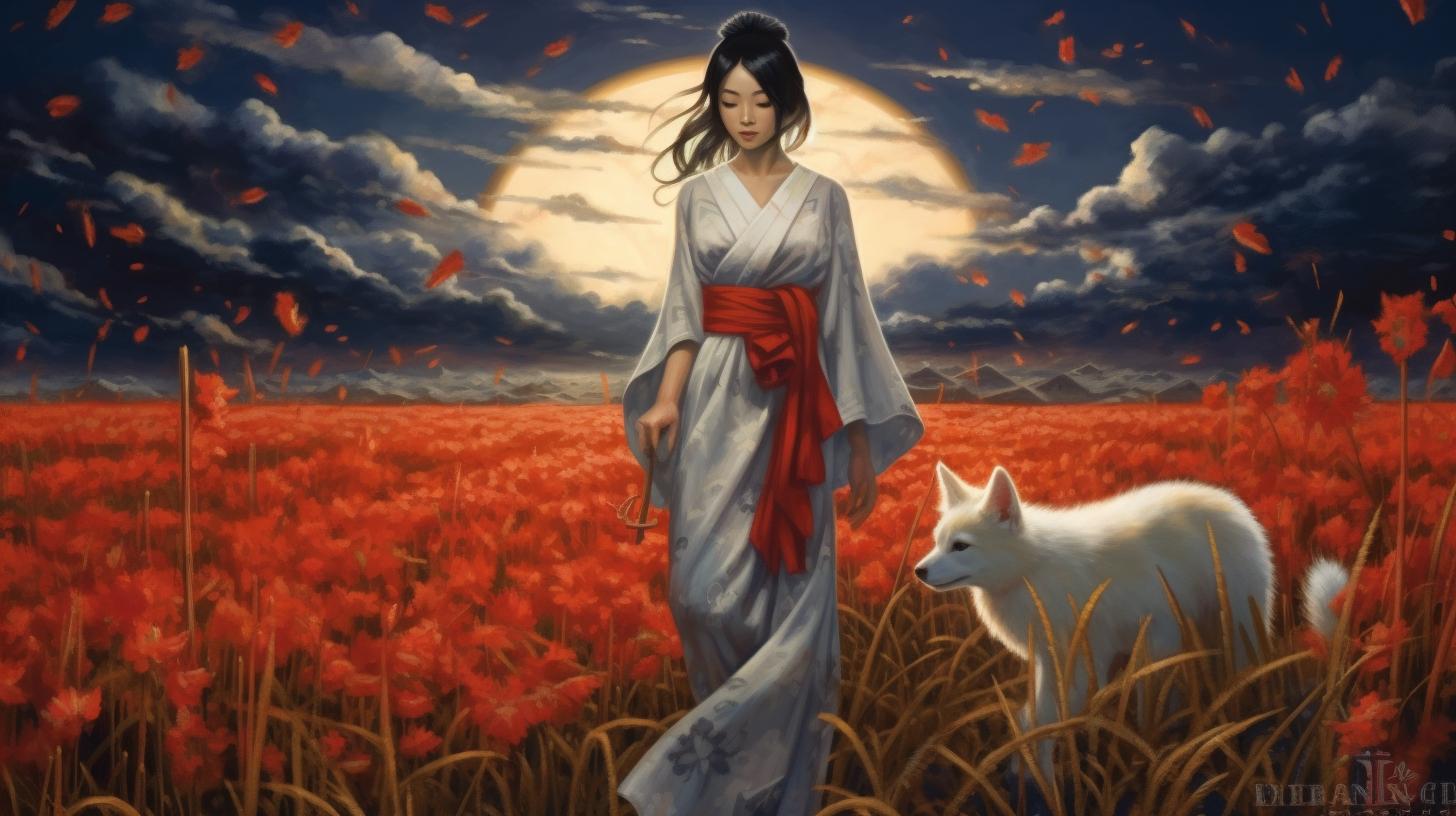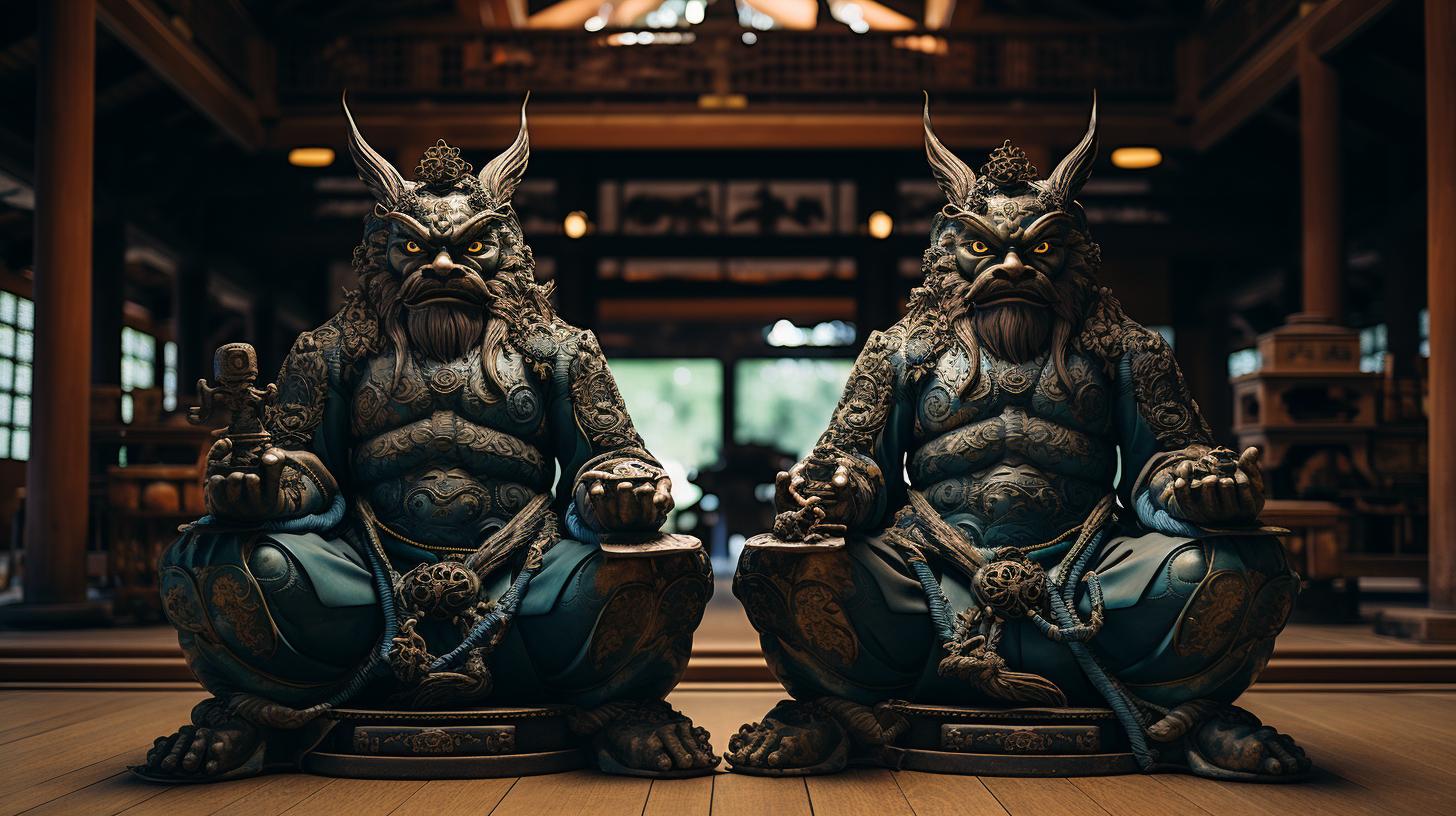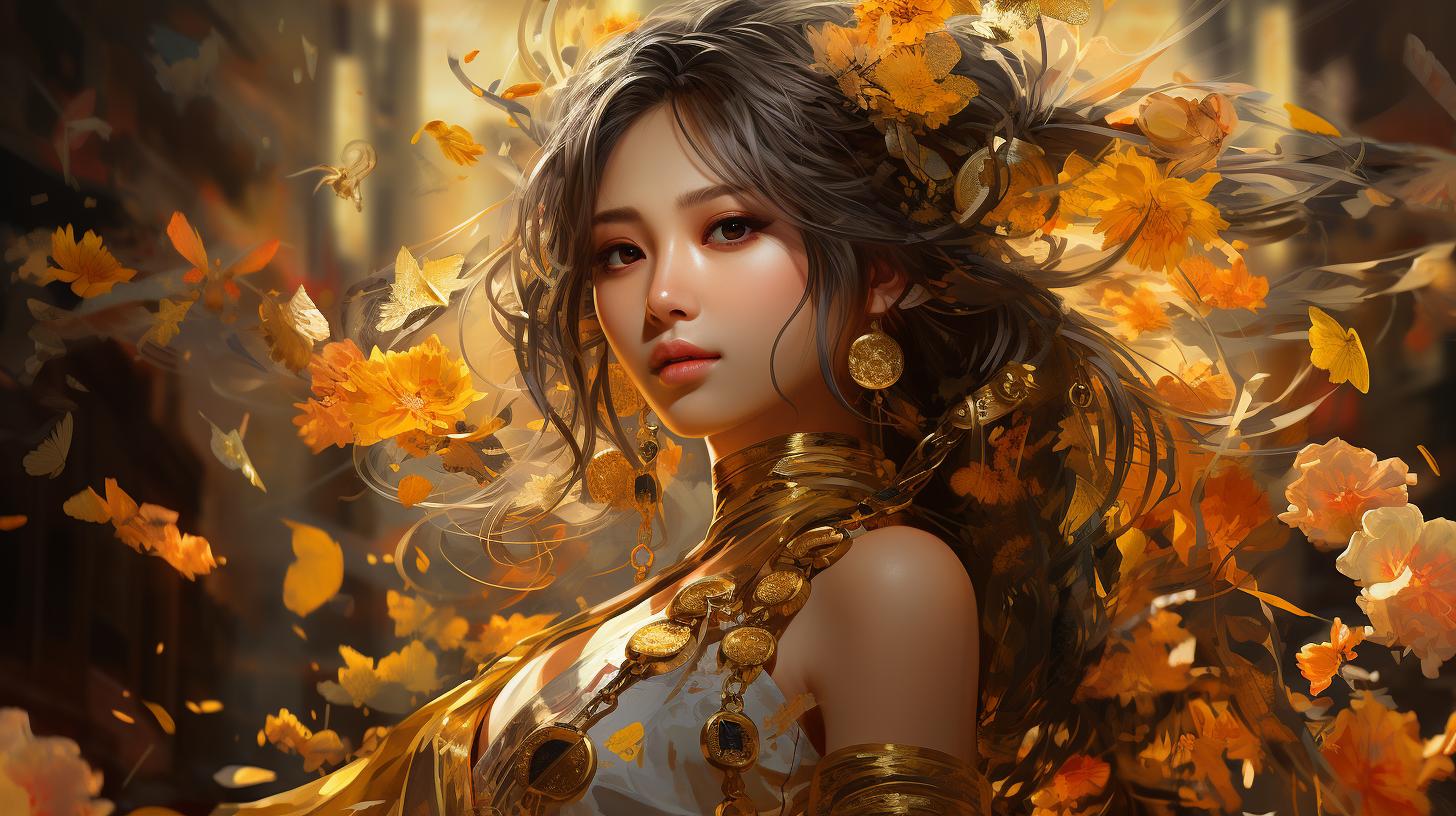Tsukuyomi: The Mythical God of the Moon in Japanese Culture
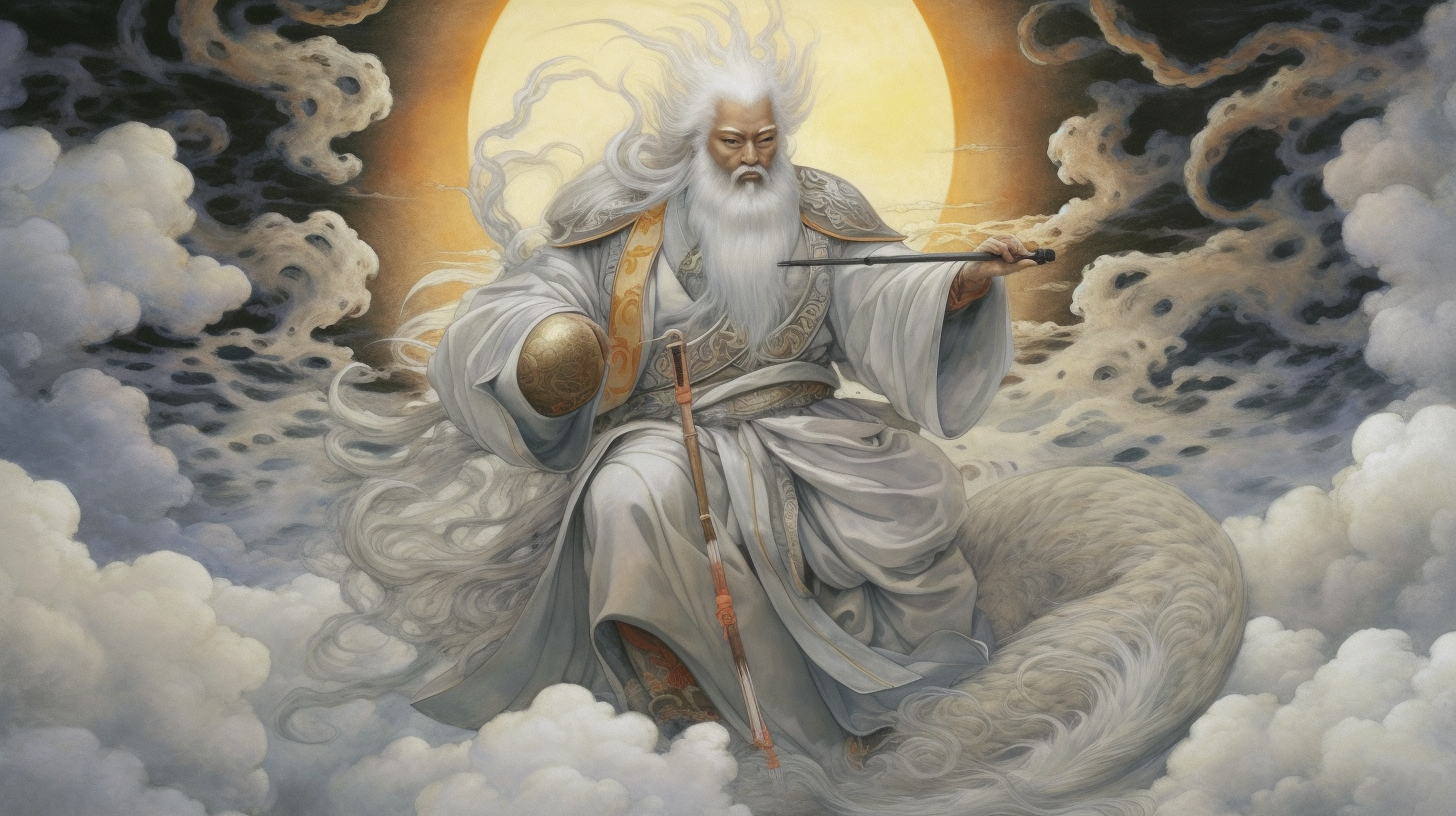
Tsukuyomi is a prominent figure in Japanese mythology and is known as the god of the moon. He was born from the right eye of Izanagi, one of the Japanese creator gods, and his siblings include the sun goddess Amaterasu and the storm god Susanoo.
Tsukuyomi married his sister Amaterasu, and despite his violent actions, which include killing the goddess of food Uke Mochi, he is worshipped at several temples and shrines in Japan. The god is often portrayed as a negative figure, but he still holds significant importance in Japanese culture, anime, and video games.
Throughout this article, we will explore Tsukuyomi in depth, from his family and mythology to his legacy in Japanese culture.
Family
The Birth of Tsukuyomi and His Siblings
According to Shinto mythology, Tsukuyomi was born from the right eye of the Japanese creator god Izanagi. He is one of three siblings along with Amaterasu, the sun goddess, and Susanoo, the storm god.
Tsukuyomi’s birth was a result of Izanagi‘s cleansing after his descent into the underworld, where he encountered the decaying body of his dead wife, causing him to purify himself.
Amaterasu and Tsukuyomi’s Marriage
Tsukuyomi and Amaterasu were siblings who married each other. their union was a significant event in Japanese mythology that reflected the importance of the sun and moon in daily life.
Despite their marriage, Tsukuyomi and Amaterasu have a complicated relationship due to Tsukuyomi’s violent actions, including killing the goddess of food, Uke Mochi. This act caused a rift between the sun and moon, which has existed since.
Despite this, the worship of Tsukuyomi continues in Japan today. Overall, Tsukuyomi’s family plays a significant role in his mythology and the mythology of Japan as a whole. His siblings and marriage to Amaterasu shed light on the importance of the sun and moon in Japanese culture and the relationship between them.
Who Is Tsukuyomi in Japanese Mythology?
Description of Tsukuyomi’s Character and Appearance
In Japanese mythology, Tsukuyomi is the god of the moon and is often described as a dark figure with long hair. He is known for his strict adherence to etiquette and order, which is reflected in his stoic personality.
Some mythological accounts have described his eyes as green, emphasizing his connection to the natural world.
Tsukuyomi’s Role in Shinto Mythology
In Shinto mythology, Tsukuyomi is one of the three children born from the god Izanagi and his wife Izanami. His siblings include the sun goddess Amaterasu and the storm god Susanoo.
Tsukuyomi’s role as god of the moon reflects his connection to the cycles of nature, and he has been associated with agriculture and hunting.
Tsukuyomi’s Relationship with Other Gods and Goddesses
While Tsukuyomi is often portrayed as a solitary figure in mythology, he has several notable relationships with other deities. One of the most significant is his marriage to his sister Amaterasu, who is the goddess of the sun.
Their union is believed to have created a balance between day and night, light and darkness. Tsukuyomi also had a turbulent relationship with Susanoo, which resulted in Tsukuyomi killing Susanoo’s attendants and triggering his banishment from heaven.
Tsukuyomi’s Negative Actions in Mythology
Tsukuyomi’s violent actions in mythology have led him to be portrayed negatively in many accounts. The most prominent of these is his killing of the goddess of food, Uke Mochi, which occurred during a banquet hosted by the goddess.
This action led to the separation of the sun and moon, reflecting the disrupted balance between day and night.
Worship of Tsukuyomi in Japan
Despite his negative associations, Tsukuyomi is still worshipped at several shrines and temples in Japan. These sites often highlight his role in agricultural cycles and his connection to the moon. In addition, Tsukuyomi has been incorporated into modern Japanese pop culture, appearing in anime and video games.
His legacy continues to fascinate people around the world, making him an enduring figure in Japanese mythology.
Tsukuyomi in Pop Culture
Depictions of Tsukuyomi in Anime and Video Games
The popularity of Tsukuyomi in Japanese pop culture has been steadily growing over the years. He has been depicted in various anime and video games, often portrayed as a powerful and enigmatic figure.
Some notable examples include the anime series Naruto, where Tsukuyomi appears as one of the most powerful Jutsu techniques used by Itachi Uchiha, and the video game Okami, where he is depicted as a boss character.
His portrayal in these mediums has given him a new lease on life, and has helped to increase his popularity amongst a wider audience.
Influence of Tsukuyomi on Japanese Pop Culture
Tsukuyomi’s influence can also be seen in Japanese pop culture outside of anime and games. His mythological status as the god of the moon has inspired countless works of art, music, and literature.
The moon festival (Tsukimi) is a popular tradition in Japan, celebrated on the 15th day of the eighth lunar month, where people gather to view the moon and offer thanks to Tsukuyomi.
Additionally, various festivals and events are held in Japan every year to celebrate and honor Tsukuyomi. He has also inspired popular figures in Japanese pop culture, such as the manga character Tsukuyomi Komoe from the series A Certain Magical Index.
Overall, Tsukuyomi’s influence can be seen all throughout Japanese pop culture, solidifying his place as a beloved and revered figure amongst the people of Japan.
Other Mythologies Compared to Tsukuyomi
Tsukuyomi, the god of the moon in Japanese mythology, is a fascinating deity who bears similarities and differences with gods and goddesses from other mythologies around the world. In this section, we will explore some of the similarities and differences between Tsukuyomi and the mythical figures from Norse, Greek, Celtic, and Egyptian mythologies, as well as Tsukuyomi’s place in world mythology.
Similarities and Differences with Norse Mythology
Norse mythology, like Japanese mythology, has a rich pantheon of gods and goddesses, with the moon being associated with the goddess Máni. However, Tsukuyomi is different from Máni in several ways.
Máni is considered to be male, and his primary task is to guide the moon across the sky. In contrast, Tsukuyomi is a male god, and his connection to the moon is more complex as he was born from the right eye of the creator god Izanagi.
Similarities and Differences with Greek Mythology
In Greek mythology, the moon is associated with the goddess Selene. There are some similarities between Tsukuyomi and Selene, as both are connected to the moon and played a role in the separation of light and darkness.
However, Selene is known for her beauty and seductive powers, whereas Tsukuyomi is often portrayed as a violent and negative figure.
Similarities and Differences with Celtic Mythology
Celtic mythology has several lunar deities, including the goddess Arianrhod and the god Mani. Arianrhod is associated with the full moon and is known as the goddess of fertility and childbirth.
In contrast, Tsukuyomi has no association with fertility or childbirth and is more focused on order and etiquette. While Mani is male and associated with the moon, he and Tsukuyomi have different backstories and personalities.
Similarities and Differences with Egyptian Mythology
Egyptian mythology has several deities associated with the moon, including Khonsu, Thoth, and Isis. Khonsu, the god of the moon, is similar to Tsukuyomi in that he is a male lunar deity.
However, Khonsu is also associated with fertility and has a positive role in the mythology. In contrast, Tsukuyomi is often remembered for his violent actions.
Tsukuyomi’s Place in World Mythology
Tsukuyomi is a unique and fascinating god of the moon, with a lasting impact on Japanese culture and mythology. While his negative actions often overshadow his positive qualities, Tsukuyomi’s adherence to order and etiquette have influenced Japanese traditions and practices.
In world mythology, Tsukuyomi’s story serves as an example of the complexities of divine personalities and the importance of respect for tradition and customs.
Tsukuyomi Across the Night Sky
The moon has played an essential role in Japanese culture for centuries. As one of the most prominent features in the night sky, its presence has been the subject of many myths and legends.
Tsukuyomi, as the god of the moon, has been highly revered in Japanese culture and has an important place in the country’s mythology. In this section, we will explore the cultural significance of the moon in Japanese culture and Tsukuyomi’s relationship to it.
Cultural Significance of the Moon in Japanese Culture
In Japan, the moon is a symbol of purity, beauty, and mystery. It is a common theme in literature, poetry, and art. The moon’s phases are often used to represent the changing of seasons, and it is associated with various festivals and traditions.
The Japanese view the moon as a symbol of good fortune and prosperity, and it is often depicted in Japanese folktales as a source of mystical power.
Importance of Tsukuyomi as God of the Moon
As the god of the moon, Tsukuyomi has a vital role in Japanese mythology. He is believed to be responsible for the moon’s light, and his presence can be felt during lunar eclipses.
Tsukuyomi is often depicted as a powerful and dominant deity, and his presence is felt throughout Japanese culture. Many Japanese people still revere him and worship at shrines dedicated to his name.
Tsukuyomi’s Relationship to Day and Night
In Japanese mythology, the sun and moon are siblings, and their relationship is complex. Tsukuyomi represents the moon, while his sister, Amaterasu, represents the sun. Together, they are responsible for the cycle of day and night.
Tsukuyomi’s power over the night sky is essential, and his influence can be seen in the waxing and waning of the moon.
Mythical Interpretations of the Moon’s Phases
Many Japanese myths and legends have been inspired by the moon’s phases. Tsukuyomi is often associated with the full moon, while his sister, Amaterasu, is associated with the new moon. Lunar eclipses were believed to be a result of Tsukuyomi’s battle with other gods or his way of displaying displeasure.
The moon’s phases influenced everything from agriculture to religious practices.
Uke Mochi and the Creation of the Moon
According to mythology, Tsukuyomi’s violent actions led to the separation of Amaterasu and himself. In one particularly gruesome story, he killed the goddess of food, Uke Mochi, which caused Amaterasu to refuse to interact with him.
It was only when the other gods intervened that they were separated, with Amaterasu taking the sky and Tsukuyomi taking the moon. This myth is believed to have inspired the creation of the moon.
In conclusion, Tsukuyomi’s role as the god of the moon is one of the most crucial elements of Japanese mythology. The moon’s cultural significance in Japan provides a significant backdrop for understanding Tsukuyomi’s place in the country’s history, and his story remains a vital aspect of Japanese tradition today.
Order and Etiquette: Tsukuyomi’s Legacy
Tsukuyomi’s Emphasis on Order and Etiquette
As the god of the moon, Tsukuyomi was known for his strict adherence to etiquette and order. His emphasis on these values is reflected in the importance placed on etiquette in Japanese culture to this day.
Tsukuyomi was also believed to represent the rational aspects of human nature and was known for his logical, restrained, and disciplined personality. These qualities were highly prized in ancient Japanese society, and the legacy of Tsukuyomi’s values can still be seen in modern Japanese culture, such as the emphasis on punctuality, respect, and politeness.
Shinto Rituals and Practices
Shinto is the indigenous religion of Japan and plays a central role in Japanese culture. Tsukuyomi is one of the many kami, or spirits, worshipped in Shintoism, and his legacy is reflected in many of the religion’s rituals and practices.
For example, Shinto priests are known for their meticulous attention to detail and their strict adherence to ceremonial etiquette, reflecting Tsukuyomi’s emphasis on order and manners. The religion also places a strong emphasis on nature and the environment, reflecting the importance of balance and harmony in Japanese culture.
Impact of Tsukuyomi’s Legacy on Japanese Culture
Tsukuyomi’s legacy can be seen in many aspects of Japanese culture, from its emphasis on etiquette and order to its rich artistic and literary traditions. For example, the use of formal, stylized language in Japanese poetry and literature can be traced back to Tsukuyomi’s emphasis on manners and decorum.
Similarly, Japanese art often features depictions of the moon and other natural elements, reflecting the importance of nature and the environment in Japanese culture.
Lessons from Tsukuyomi’s Story
Tsukuyomi’s story provides valuable lessons about the importance of balance, order, and etiquette in human society. His emphasis on rationality, discipline, and restraint can be seen as a counterbalance to the passionate, impulsive aspects of human nature, highlighting the need for both elements in society.
Tsukuyomi’s story also emphasizes the importance of respecting nature and the environment, reflecting the traditional Japanese belief in the interconnectedness of all things. Overall, Tsukuyomi’s legacy provides a rich and multifaceted cultural tradition that continues to influence Japanese society to this day.
Reading Poetry with Tsukuyomi
Poetry in Japanese and Shinto Culture
Poetry has a special place in Japanese culture, with an emphasis on nature and spirituality. Shinto, the indigenous religion of Japan, also places importance on poetry as a means of communicating with the gods.
In Shintoism, poetry is considered a way to express deep emotions and connects people to the divine. Japanese poetry is known for its brevity and attention to detail, using specific language to evoke vivid imagery.
Example Poems Linked to Tsukuyomi and the Moon
Tsukuyomi’s role as the god of the moon has inspired many poets throughout history. A well-known Japanese poem associated with Tsukuyomi is the 10th-century “A Moonlit Night” by Lady Izumi Shikibu.
The poem describes the beauty of the moon and its reflection on the water, evoking a sense of tranquility and contemplation.
Interpretations of Poems about Tsukuyomi
Poems about Tsukuyomi often explore the god’s complex character and relationship with his sister Amaterasu. Some poems focus on the violent nature of Tsukuyomi’s actions while others celebrate his role as guardian of the night sky.
Interpretations of these poems can vary widely, depending on the reader’s perspective and cultural background.
Tsukuyomi’s Role in Japanese Literature
Tsukuyomi’s influence is not limited to poetry. He is also a prominent figure in Japanese literature, appearing in classic works such as The Tale of Genji and The Chronicles of Japan.
In these tales, Tsukuyomi is depicted as a powerful and sometimes dangerous deity, but also as a symbol of order and harmony in the natural world.
- The Tale of Genji: In this 11th-century novel by Murasaki Shikibu, Tsukuyomi is mentioned as one of the gods worshipped by the aristocratic characters.
- The Chronicles of Japan: This historical record, compiled in the 8th century, describes how Tsukuyomi’s violent actions led to the separation of the moon and sun.
In contemporary Japanese literature, Tsukuyomi continues to be a popular subject, appearing in manga, anime, and other forms of media.
Overall, Tsukuyomi’s legacy as the god of the moon has had a profound impact on Japanese culture, influencing poetry, literature, and art. His complex character and relationships with other deities continue to fascinate and inspire new generations of writers, artists, and scholars.
Final Thoughts on Tsukuyomi God of the Moon
Legacy of Tsukuyomi
Tsukuyomi, or the Moon God, has left a lasting legacy within Japanese culture. Tsukuyomi placed great importance on order and etiquette, and this legacy still holds true in modern times. Many Japanese people uphold these values in their daily lives and in special occasions such as Shinto ceremonies.
Lessons from Tsukuyomi
The story of Tsukuyomi also provides several lessons for individuals and society as a whole. One of these is the importance of respecting others and adhering to cultural norms. The story of Tsukuyomi also highlights the consequences of violent actions and the need for forgiveness and reconciliation.
Poetry with Tsukuyomi
Poetry has played an important role in Japanese culture for centuries, and many poems have been written about the Moon God, Tsukuyomi. From traditional haikus to longer pieces, these poems capture the beauty and mystery of the moon.
Interpretations of Poems About Tsukuyomi
Interpreting these poems is key to understanding the significance of Tsukuyomi and his connection to the moon. Many poems speak of Tsukuyomi’s relationship with his sister, Amaterasu, and his violent actions towards Uke Mochi.
Others focus on the beauty and power of the moon, and its role in Japanese culture.
Comparison to Other Mythologies
While Tsukuyomi is a prominent figure in Japanese mythology, many cultures have their own interpretations of the moon and its place in the world. Comparing and contrasting these myths can provide insight into universal themes and beliefs.
Similarities and Differences with Other Mythologies
Norse, Greek, Celtic, and Egyptian mythologies all have their own stories about the moon and its significance. Despite these differences, many themes overlap, such as the moon’s connection to death and the afterlife.
The Moon in Japanese Culture
The moon is a central symbol in Japanese culture and has been celebrated in poetry, art, and literature for centuries. From moon-viewing festivals to depictions of the moon in anime and manga, the moon’s significance is ingrained in Japanese society.
Importance of Tsukuyomi as God of the Moon
As the God of the Moon, Tsukuyomi plays an important role in Japanese culture and holds an enduring place in Japanese mythology. The moon is often seen as a source of inspiration and reflection, and Tsukuyomi embodies this in his strict adherence to order and etiquette.
Conclusion
Tsukuyomi, the Moon God, remains a fascinating and complex figure in Japanese mythology. From his birth to his marriage to Amaterasu, and his relationship with other gods and goddesses, Tsukuyomi’s story continues to captivate and inspire.
Through his legacy, poetry, and cultural significance, Tsukuyomi will continue to be an integral part of Japanese culture for generations to come..

